11 Colorful Fish That Could Be Living in Your Tank Right Now
If your aquarium feels a little blah, maybe it’s missing some bold personalities. We’re talking fins that flash like neon signs and colors that could outshine a fashion runway. These fish don’t need a coral reef to look amazing—they’ll happily turn your living room into a living masterpiece. Let’s meet a few that can brighten up your tank.
Betta Fish
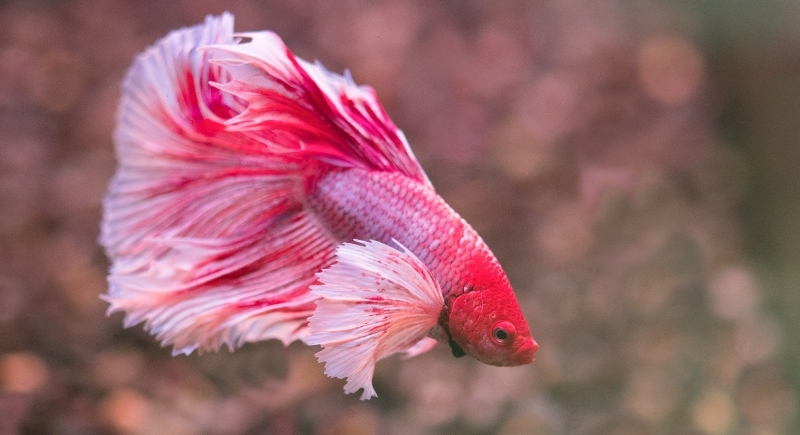
Credit: Getty Images
Betta fish are underwater divas. They stand out with their long, flowing fins and colors that pop—bright reds, deep blues, and even flashes of green. They’re easy to care for but do best on their own. They’re also labyrinth breathers, meaning they can gulp air from the surface.
Guppies
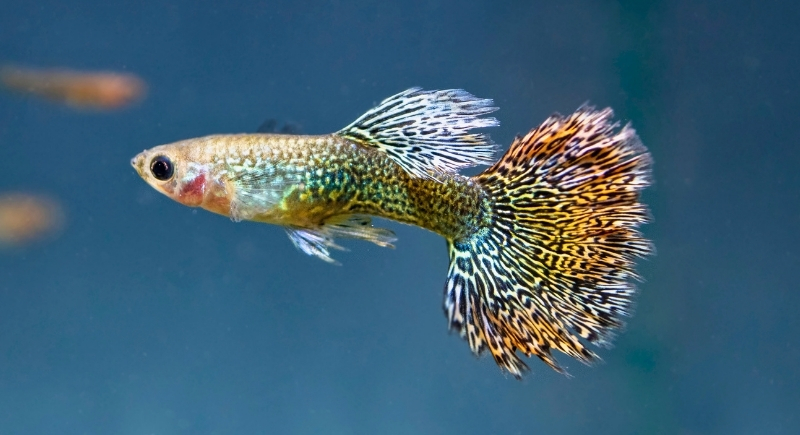
Credit: Getty Images
Guppies are like confetti with fins—tiny, cheerful, and colorful in all the right ways. They’re often the first fish people fall for, thanks to their adaptability and endless color combinations. Males are incredibly vibrant, with tails that can be spotted, striped, or even shaped like fans. They’re peaceful, easygoing, and thrive in groups.
Neon Tetras
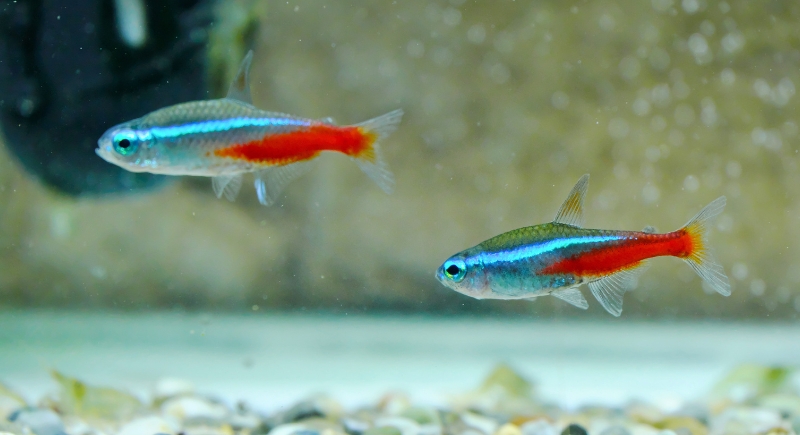
Credit: Getty Images
Native to the blackwater streams of the Amazon, Neon Tetras have a distinctive iridescent blue stripe and a red tail section that gives them their name. These fish are small—rarely exceeding 1.5 inches—but they’re at their best in schools of at least six. They prefer soft, slightly acidic water and subdued lighting, which mimics their natural habitat.
Discus Fish
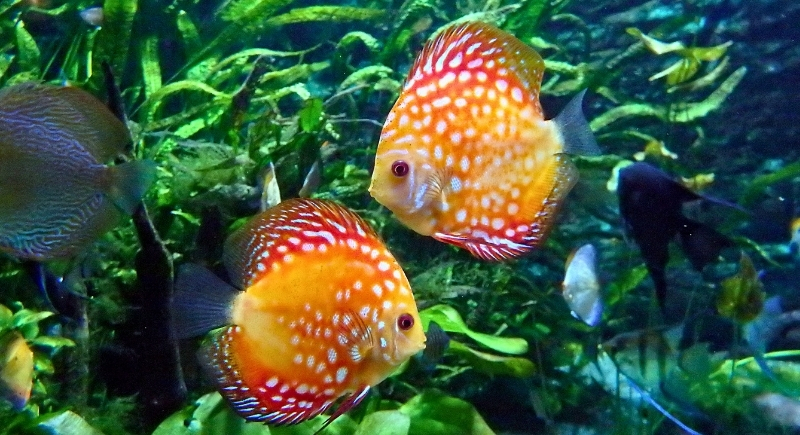
Credit: Getty Images
Though they are a step up in terms of care, Discus’ striking circular shape and complex coloration make the effort worthwhile. These cichlids originate from the slow-moving waters of the Amazon River and require warm water (82–86°F), low current, and excellent filtration. They’re social but sensitive, so it’s best to keep them in small groups of five or more.
Mollies
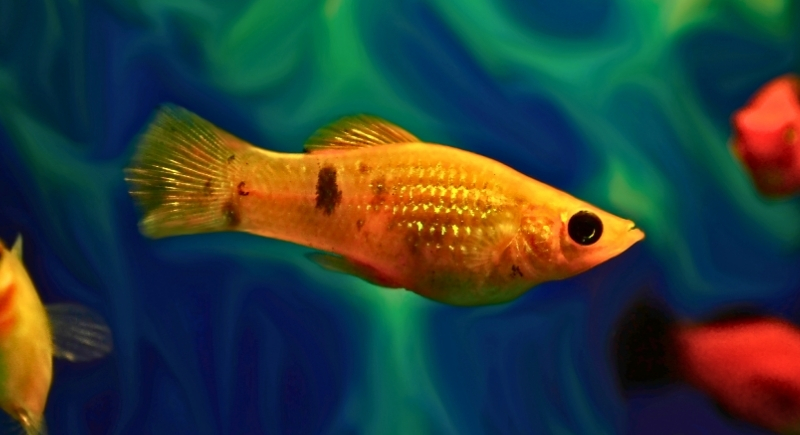
Credit: Getty Images
Mollies are versatile, livebearing fish that adapt well to different conditions, including slightly brackish water. You’ll find them in shades ranging from black and gold to speckled and albino varieties. While they tolerate a wide temperature range, they tend to do best around 75–80°F. One thing to know upfront: they breed prolifically. If there are males and females together, expect fry.
Dwarf Gourami
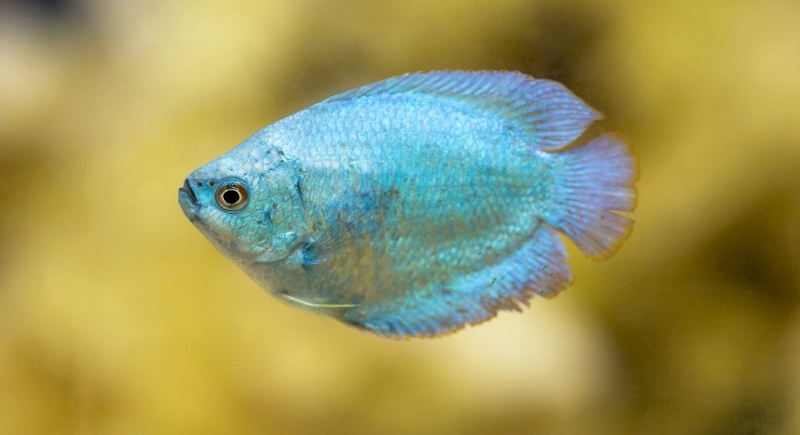
Credit: Getty Images
Dwarf Gouramis bring subtle beauty to a tank with their shimmering scales and calm demeanor. Males are especially colorful, often showing a mix of blue and red hues. They also possess a labyrinth organ, which allows them to breathe surface air—a useful trait in low-flow tanks. Though generally peaceful, they can become territorial with their own kind, so keep just one male or provide enough space for multiple.
Platies
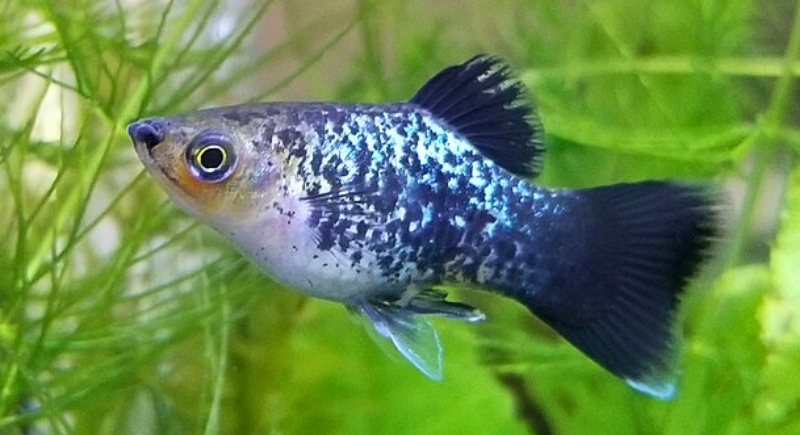
Credit: Wikimedia Commons
Platies are low-maintenance fish that offer a wide range of color options, from solid reds and yellows to two-tone varieties like the “tuxedo” platy. They’re small—about 2.5 inches at full size—and get along well with other peaceful fish. Like guppies and mollies, they’re livebearers, so reproduction happens easily and often.
Cherry Barb
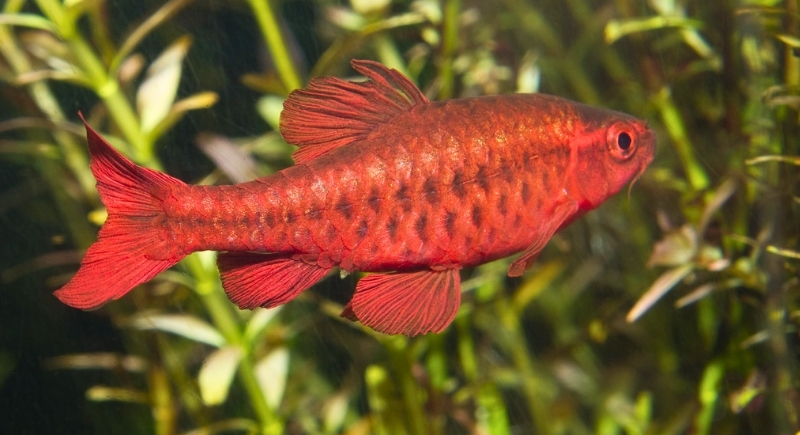
Credit: flickr
True to their name, Cherry Barbs are active swimmers that don’t demand much attention but still add color and energy to a tank. Males develop a rich, reddish hue during breeding, while females stay more muted with a bronze tone. They’re not aggressive but can be shy, so dense plant cover helps them feel secure.
German Blue Ram
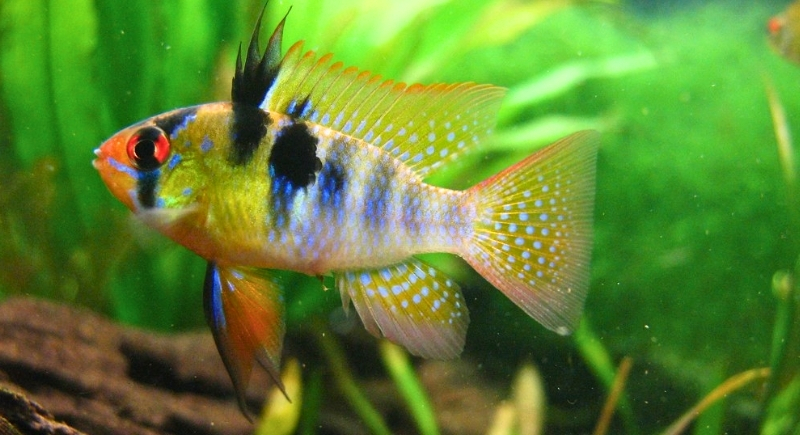
Credit: flickr
The German Blue Ram is a compact cichlid with a surprising amount of personality. Don’t let their size fool you—they’re full of quirks. These fish are monogamous and often form strong pair bonds, sharing duties when it comes to guarding eggs and fry. Despite being part of the cichlid family, they’re relatively peaceful.
Killifish
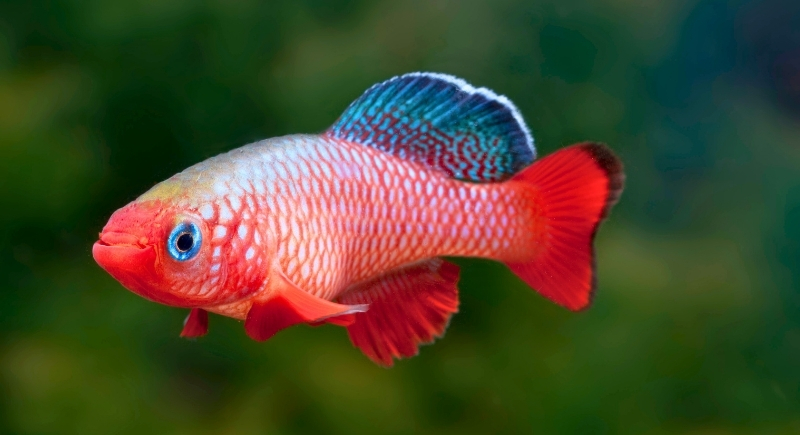
Credit: Getty Images
Killifish are some of the most vividly colored freshwater fish, though many species have short lifespans—sometimes only a year, especially the annual types from temporary pools in Africa or South America. That said, they’re rewarding to keep for dedicated aquarists.
Zebra Danios
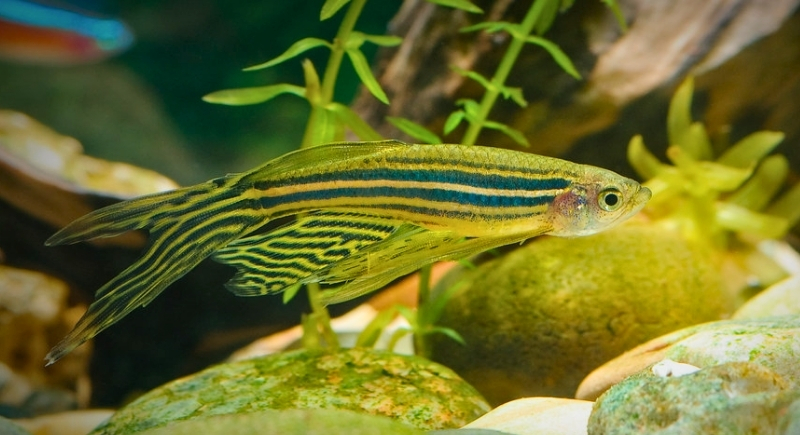
Credit: flickr
Zebra Danios race through tanks like they’ve got somewhere to be. They’re recognizable by their horizontal blue and silver stripes and energetic swimming style. Danios are schooling fish that prefer groups of six or more and tend to stay near the upper levels of the tank.
Mandarin Dragonet
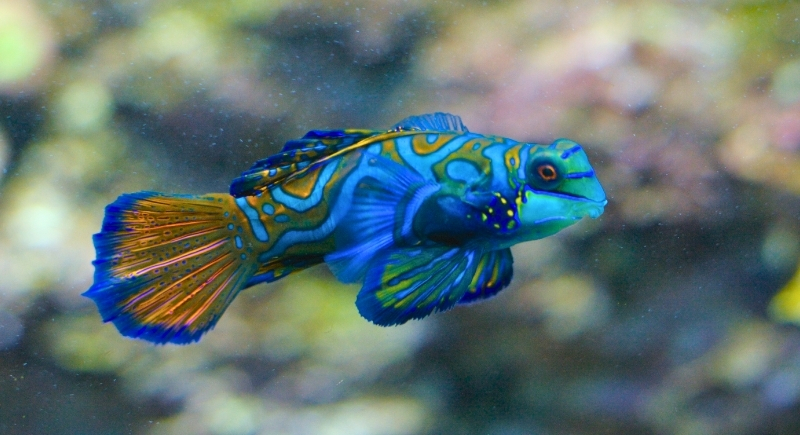
Credit: Wikimedia Commons
The Mandarin Dragonet is a saltwater fish known for its intricate patterns and slow, deliberate movement. They’re native to the Indo-Pacific and feed primarily on copepods and other microfauna found in live rock. For that reason, they require mature reef tanks with established ecosystems—not ideal for beginners.
Peacock Cichlid
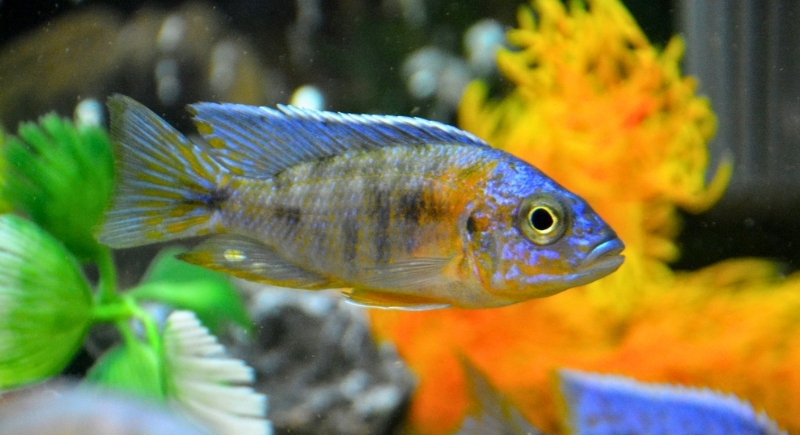
Credit: flickr
Peacock Cichlids, from Africa’s Lake Malawi, are known for their brilliant coloration—males especially. They do best in species-specific setups or with other Malawi cichlids that can handle a bit of attitude. These fish are active diggers and prefer rocky structures that mimic their natural environment. Water hardness and pH should be on the higher side, with temperatures around 76–82°F.
Endler’s Livebearer
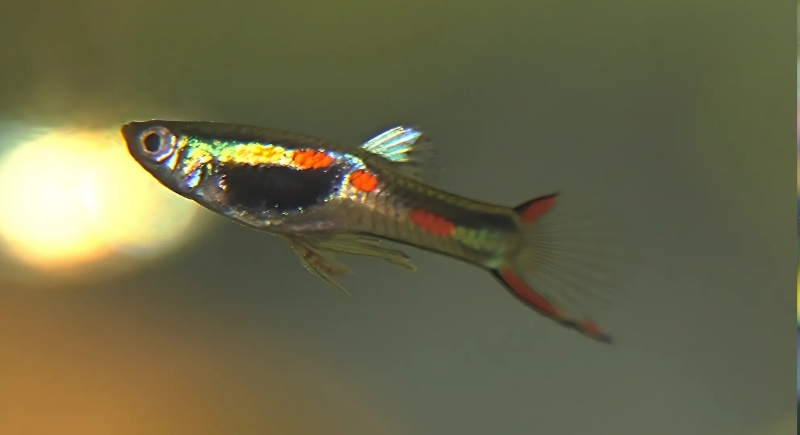
Credit: flickr
Endler’s Livebearers are a close relative of guppies but stay smaller and often display sharper color contrast. Males are especially eye-catching with metallic greens and oranges. They reproduce quickly and frequently, so if you don’t want a growing population, you’ll need to separate males from females.
Boesemani Rainbowfish
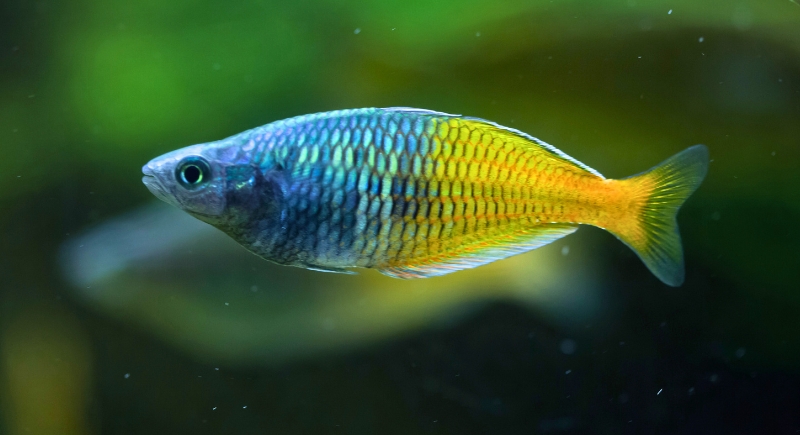
Credit: Getty Images
Boesemani Rainbowfish come from freshwater lakes in Indonesia and are known for their two-tone coloration—typically blue in the front and orange or yellow in the back. Males display brighter colors, especially in the early morning or when courting. They’re active swimmers that need open space and a tank of at least 30 gallons.